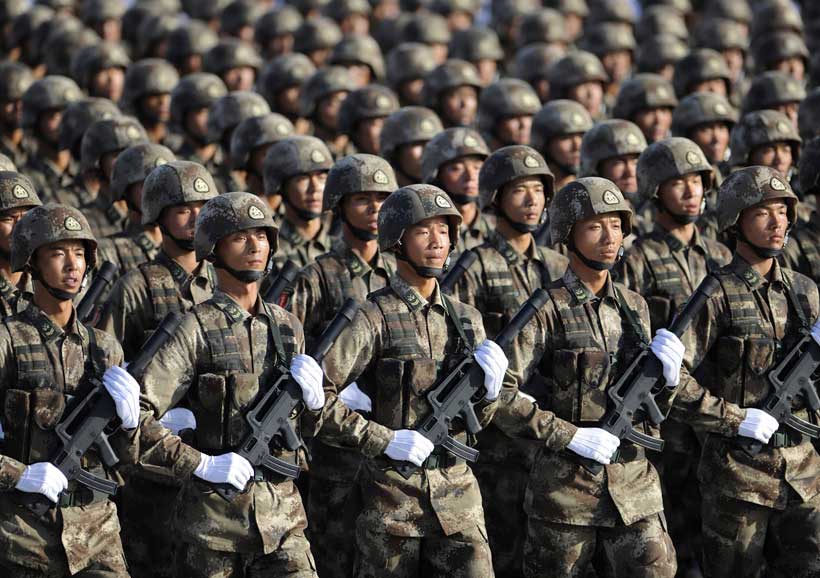Recent reports have confirmed that China is undergoing a historic military build-up, marking the largest expansion since Germany in the 1930s. Beijing seems to be intent on matching and taking on the Western influence in all arenas, massively expanding its military capabilities to further its geopolitical influence making it a global player looking to match the West in the high seas as well as on different continents.
Last Friday, China launched its first Type 076 amphibious assault ship, the Sichuan, in order to project its naval capabilities beyond its shores. This launch improved China’s ability to operate in distant theatres, such as a large-scale assault on naval operations and humanitarian operations far from its shores.
Apart from this, the PRC is gaining momentum in building up its air force. Footage and photos of new Chinese stealth fighter jets indicate that Beijing is narrowing its technological gap to Western power. The US and other allies have an edge in semiconductor chips crucial to next-generation fighters, but developments in China signal a growing capability to innovate and modernize.
This rapid modernization of forces is reshaping the global power balance and creating ‘threat perception’ among Western nations. Pentagon’s annual report to Congress warned that the US has spent $5.4 trillion on its war on terror and futile nation-building while the Chinese has modernized its military.
China is pushing to dominate in naval and aerial capabilities, coupled with advancements in nuclear weaponry, highlighting a clear ambition to look powerful on the global stage. The dragon has the largest navy in the world, and it continues ramping up its military with weapons capable of reaching the US and strategically important assets abroad.
China is also highly investing in nuclear capabilities. According to some reports, 400 ICBMs and more than 600 warheads are already available for operational usage. By the year 2030, this is likely to rise to above 1,000 nuclear warheads, representing a drastic transformation in its deterrent and global strategic posture.
Moreover, China’s shipbuilding industry dwarfs that of the US, with a capacity of 250 times greater. This industrial advantage achieved in recent years enables China to produce and deploy vessels rapidly. This further enhances its maritime capabilities. Such advancements parallel its broader goal of controlling regional seas and oceans by asserting influence in regions like the South China Sea, a strategic area contested by several nations and challenging US hegemony globally.
As China continues to modernize and expand its military capabilities, the implications for global security are profound. The competition between Beijing and the West is shaping the 21st century into an era of rivalry and strategic realignments, with the balance of power hanging in the balance.
